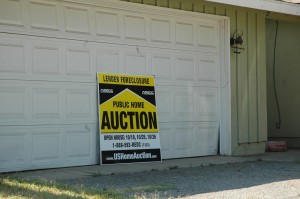 It is somewhat baffling that the word ‘foreclosure’ has barely received any mention in this presidential election cycle, or ‘cities’ for that matter, and I really do not know how we have allowed both candidates to get away with it. To the extent that foreclosures have surfaced, has been in discussions regarding the potentially negative impact of foreclosure on voter turnout (since the whereabouts of foreclosed residents is often difficult to trace).
It is somewhat baffling that the word ‘foreclosure’ has barely received any mention in this presidential election cycle, or ‘cities’ for that matter, and I really do not know how we have allowed both candidates to get away with it. To the extent that foreclosures have surfaced, has been in discussions regarding the potentially negative impact of foreclosure on voter turnout (since the whereabouts of foreclosed residents is often difficult to trace).
In the 2008 election, there was no denying the clear correlation between the economic downturn and the outsized role that the deregulation of the housing market played in creating it. The general public came to know that lending institutions profited greatly from the proliferation of subprime mortgages, with no expressed concern over the strong likelihood of borrower default, thereby turning the American Dream of homeownership into a global nightmare. A lesser known fact, according to Dan Immergluck’s book, Foreclosed, is that federal regulators, such as the Office of Thrift Supervision (OTS) and the Office of the Comptroller of the Currency (OCC), worked with lenders in preempting state measures designed to combat predatory loans as concerns over the subprime market began to surface as early as the late 1990s.
So what exactly is the present state of foreclosed homes in the United States? Unfortunately, 3.5 million homes have been foreclosed on since 2008. President Obama’s Home Affordable Modification Programwas projected to help four million homeowners but has only been able to help less than a million people modify their loans and keep their homes. The convoluted packaging of the original loan terms have posed a greater challenge than anticipated in restructuring them through the modification process.
Recent measures show, however, that foreclosure filings are at a 5-year low as of September 2012. This certainly does not mean that the country is no longer dealing with a crisis. About 180,000 foreclosure filings were recorded last month and apparently, the average number of monthly foreclosure filings in a stable housing market is 75,000. This also does not speak to the approximately 1.8 million already in the process of foreclosure. Furthermore, although national foreclosure filing numbers may be showing signs of decrease, some states continue to experience greater hardships than others where the top seven cities with the highest foreclosure rates are all located in California.
A major challenge to developing a comprehensive federal foreclosure response is of course the reality that housing markets are very much local. Conditions vary greatly among municipalities and require tailored solutions for them to work well. At the same time, this does not absolve the federal government from working with states to develop more wholesome strategies. To its credit, the Bush Administration’s Neighborhood Stabilization Program (NSP) was an attempt to localize the approach to dealing with the foreclosure situation by allowing localities and community-based organizations to manage foreclosed properties. The problem though was that NSP failed to address how communities might pursue community development once foreclosed properties were purchased by the city or group, rehabilitated or demolished.
For now, it is unlikely that the topic of home foreclosures will surface in a substantial way over the next couple of days. While there are no easy pathways out of this calamity, let us exercise diligence in ensuring that foreclosures are brought back to the forefront even after November 6th.
As originally featured in the Urban Times.


About The Author: Vanessa L.
More posts by Vanessa L.